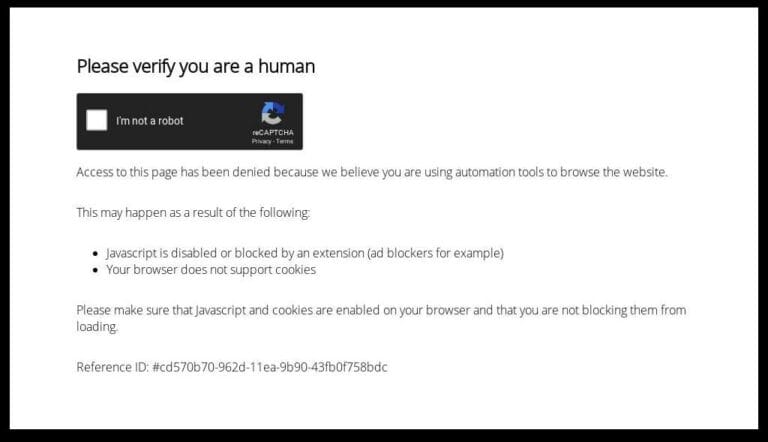Crafting Your WordPress Website Maintenance Agreement: Essential Clauses for Success
etting up a WordPress website is one thing, but keeping it running smoothly is another. If you offer maintenance services, you know how important it is to have a clear agreement. This document protects both you and your client, making sure everyone knows what to expect. Let’s look at what goes into a solid wordpress website maintenance agreement.
Key Takeaways
- Clearly define what services are included and what’s not covered in your wordpress website maintenance agreement.
- Set clear expectations for clients regarding maintenance tasks, roles, and communication processes.
- Plan for potential issues like client communication lapses or unexpected site problems.
- Outline payment terms, including schedules and cancellation policies, in your agreement.
- Include legal clauses for ownership, dispute resolution, and liability limitations to protect your business.
Defining The Scope Of Your WordPress Website Maintenance Agreement
When you’re setting up a maintenance plan for a WordPress site, the first big step is figuring out exactly what you’re going to do and, just as importantly, what you’re not going to do. This part of the agreement, the scope of work, is really the backbone of the whole deal. It’s where you lay out all the nitty-gritty details so there are no surprises later on. Think of it like a roadmap for both you and the client.
Clearly Outlining Included Services
This is where you list everything you’ll handle. Be specific. Instead of just saying ‘updates,’ list ‘WordPress core updates,’ ‘plugin updates,’ and ‘theme updates.’ You might also include things like regular backups, basic security scans, and uptime monitoring. It’s good to break these down so the client knows precisely what they’re paying for. For example:
- Core WordPress Updates: Keeping the main WordPress software up-to-date.
- Plugin Updates: Updating all installed plugins to their latest versions.
- Theme Updates: Updating the active WordPress theme.
- Database Optimization: Running regular cleanups to keep the database running smoothly.
- Security Monitoring: Basic checks for malware and suspicious activity.
- Daily Backups: Creating a full backup of the website files and database each day.
Specifying Excluded Services
Just as important as listing what’s included is listing what’s not included. This prevents misunderstandings down the line. If you’re not offering content writing, graphic design, or major website redesigns as part of the maintenance package, say so clearly. You could include a section like:
- Content creation or editing
- Graphic design or image manipulation
- New feature development or custom coding
- Search engine optimization (SEO) strategy or implementation
- Website redesigns or major structural changes
- Third-party service support (e.g., email provider issues)
Being upfront about what’s outside the scope helps manage client expectations and avoids potential conflicts. It’s better to be clear now than to deal with a disagreement later about services that weren’t part of the original plan.
Detailing Service Level Definitions
This section defines what different levels of service mean, especially if you offer tiered plans. For instance, what constitutes a ‘minor fix’ versus a ‘major issue’? How quickly will you respond to a critical problem versus a routine request? Defining these terms helps set clear expectations for response times and resolution.
| Service Level | Response Time | Resolution Target |
|---|---|---|
| Critical | 2 Business Hours | 8 Business Hours |
| Standard | 8 Business Hours | 2 Business Days |
| Minor Request | 24 Business Hours | 3 Business Days |
This clarity helps clients understand what to expect when they reach out with a problem, and it protects you by setting realistic timelines for your work. It’s all about making sure everyone’s on the same page regarding the pace of the maintenance.
Establishing Clear Expectations And Boundaries
Setting clear expectations and boundaries from the get-go is super important for any WordPress maintenance agreement. It really helps avoid those awkward
Addressing Potential Scenarios In Your Agreement
Things don’t always go according to plan, right? That’s why your WordPress maintenance agreement needs to think about what could go wrong and how you’ll handle it. It’s not about being negative; it’s about being prepared. This way, you and your client know what to expect if something unexpected pops up.
Mitigating Common ‘What If’ Situations
Let’s talk about those ‘what if’ moments. What if a client suddenly needs a feature that wasn’t in the original plan? Or what if a critical plugin update breaks your site? Your agreement should lay out a process for these. For example, you might include a clause for handling scope changes, which could involve a simple addendum to the contract outlining the new work, cost, and timeline. It’s also smart to define how many minor revisions are included and what constitutes a significant change that requires a separate quote. This prevents those awkward conversations later on.
Here’s a quick look at some common scenarios:
- Scope Creep: Client asks for more than initially agreed.
- Technical Issues: A plugin update causes a site malfunction.
- Content Delays: Client doesn’t provide content on time.
- Performance Drops: Website speed suddenly decreases.
Handling Client Communication Lapses
What happens if your client just… stops responding? Maybe they go on vacation without telling you, or they’re just swamped. Your agreement should specify a period of communication silence. For instance, if you don’t hear back from them within a certain number of days (say, 7 or 10) after a request for information or approval, you might have the option to proceed with a default course of action or pause the work. This protects your time and keeps projects moving. It’s also good to state how you prefer to communicate – email, phone, a project management tool – and what response times are expected from both sides.
It’s important to establish clear communication protocols. This includes defining preferred contact methods, expected response times, and what constitutes an urgent request. Having this in writing avoids misunderstandings and keeps the workflow smooth.
Planning For Unexpected Issues
Sometimes, despite everyone’s best efforts, things go sideways. Maybe a major security breach occurs, or a critical server issue arises that’s outside your direct control but affects the website. Your agreement should outline your responsibilities in such events. This might include your commitment to investigate the issue, communicate findings, and implement fixes within a defined timeframe. It’s also wise to mention that while you’ll do your best, you can’t be held responsible for issues caused by third-party services or factors beyond your reasonable control. For WordPress maintenance services, this means being clear about what’s covered if a core WordPress update causes problems.
Outlining Payment Terms And Termination Conditions

When you’re setting up a maintenance agreement for your WordPress site, getting the money stuff and how to end things sorted out is pretty important. It’s not the most fun part, but being clear now saves a lot of headaches later. Think of it like this: you wouldn’t start a big project without knowing how you’ll get paid, right? The same goes for ongoing maintenance.
Detailing Payment Schedules And Methods
First off, you need to lay out exactly when and how you expect to get paid. This means setting a clear schedule. Are payments due monthly, quarterly, or perhaps after certain milestones are hit? It’s also good to mention what payment methods you accept – bank transfer, check, online payment systems, whatever works for you. It’s best to get at least a portion of the payment upfront to show commitment from the client. This helps cover initial costs and ensures you’re not fronting all the money. You might also want to include details about what happens if a payment is late, like a small grace period before any late fees kick in.
Specifying Cancellation Policies For Both Parties
Things change, and sometimes an agreement just doesn’t work out anymore. That’s why you need a cancellation policy. For the client, how much notice do they need to give if they want to stop the service? And for you, what happens if you can’t continue the maintenance for some reason? It’s also important to think about what happens to any work in progress or data if the agreement is terminated. This section should clearly state the notice period required and any procedures that need to be followed.
Addressing Payment Obligations Upon Termination
So, what if the agreement ends mid-way through a billing cycle or after a specific task has been completed but before the final payment? You need to figure out how to handle payments in this situation. For instance, if a client cancels, do they owe for the work already done up to the cancellation date? Or if you terminate the agreement, do you owe them a refund for any prepaid services that haven’t been rendered? Clearly defining these obligations prevents confusion and potential disputes when the maintenance agreement is ended.
Incorporating Essential Legal Clauses
This section is where we get down to the nitty-gritty of making sure everything is legally sound. It’s not the most exciting part, but it’s super important for protecting both you and your client. Think of it as building a solid foundation for your working relationship.
Defining Ownership Of Work And Intellectual Property
This is about who owns what when the work is done. For example, if you create custom code or graphics for the client’s site, you need to be clear about whether they own it outright, or if you retain certain rights. It’s best to specify exactly what intellectual property rights transfer to the client upon final payment. This prevents any confusion later on about who can use what, especially if the client wants to hire someone else down the line. You might want to keep rights to your general code snippets or design elements, for instance. This is a key part of any WordPress website maintenance agreement.
Establishing Dispute Resolution Mechanisms
Things don’t always go smoothly, right? So, what happens when you and the client disagree on something? This clause lays out how you’ll handle disagreements. Will you try mediation first? Arbitration? Or go straight to court? It’s usually better to try less formal methods before involving lawyers.
Here are some common ways to handle disputes:
- Mediation: A neutral third party helps you and the client talk through the issue and find a solution.
- Arbitration: A neutral third party hears both sides and makes a binding decision.
- Litigation: Taking the matter to court, which can be costly and time-consuming.
Choosing one of these upfront can save a lot of headaches if a problem pops up.
Including Warranty And Liability Limitations
This part is about managing expectations and limiting your exposure. You’ll want to state what warranties, if any, you provide. For instance, you might warrant that your work will be performed in a professional manner. But you also need to limit your liability. This means stating that you aren’t responsible for things outside your control, like issues caused by the client’s own actions, third-party plugins not covered by your service, or problems arising from the website’s hosting environment. It’s also wise to include a clause that limits the total amount of damages the client could claim from you, often tied to the total amount paid for your services. This is similar to how GoDaddy clarifies its responsibilities for website design services, noting they aren’t responsible for third-party add-ons.
Ensuring Agreement Clarity And Execution

Getting the agreement right is more than just putting words on paper; it’s about making sure everyone involved actually understands what they’re signing and what’s expected. If the agreement is confusing, it’s basically useless. We want to make sure our clients know exactly what they’re getting into, and we know what we need to do. It’s all about being upfront and clear from the start.
Simplifying Language for Client Understanding
Let’s be honest, legal documents can be a real headache. We try to cut out the fancy jargon and legal speak that nobody really understands. Think of it like explaining something to a friend – you use words they get. We break down what each part of the agreement means, especially when it comes to the services we’ll provide and what you can expect from us. Our goal is for you to read it and think, “Okay, I get this.” No need for a law degree to figure out your website maintenance plan.
Confirming Client Authority to Sign
Before we get too far, we need to make sure the person signing the agreement is actually authorized to do so. It’s like making sure you’re talking to the right person in charge before making a big decision. We’ll just ask a quick question to confirm that you have the go-ahead from your company to agree to these terms. This just prevents any awkwardness down the road if someone else was supposed to be the one signing off.
Gathering Necessary Client Information
To make sure we have everything we need to manage your site properly, we’ll need a few bits of info from you. This isn’t anything too personal, just the practical stuff. We’ll need details like:
- Your website’s login credentials (securely, of course).
- Any existing hosting or domain registrar account information.
- Contact details for key people on your end, like who to reach out to with questions.
- Information about any specific plugins or themes that are critical to your site’s function.
Having this information upfront helps us hit the ground running and avoid delays. It’s all part of making the process smooth and efficient for everyone.
Wrapping It Up: Your Maintenance Agreement
So, we’ve gone over the big stuff that needs to be in your WordPress maintenance agreement. Think of this document as your roadmap for working with clients. It sets clear expectations, covers what you’ll do (and what you won’t), and helps avoid those awkward “I thought you meant…” moments later on. Having a solid contract protects both you and your client, making sure everyone’s on the same page from the start. It’s really about building trust and making sure your WordPress maintenance business runs smoothly. Don’t skip this step – it’s a game-changer for happy clients and a healthy business.
Frequently Asked Questions
What exactly goes into the ‘scope of work’ section?
Think of the scope as a detailed list of everything you’ll do for the client’s website. It’s like a menu that clearly shows what’s included, like updates and backups, and also what’s not, like adding new features. This stops confusion later on.
How do I set clear expectations and boundaries with my clients?
Setting clear expectations means telling the client exactly what they can expect from your service and when. It’s also about defining who does what – your job versus their job – to make sure everyone is on the same page and tasks are done smoothly.
What kind of ‘what if’ scenarios should I prepare for in my agreement?
You should plan for things that might go wrong, like if a client stops responding or if a website update causes a problem. Having a plan for these ‘what if’ moments helps you handle unexpected issues calmly and professionally.
What are the important things to include about payment and ending the agreement?
This part is all about the money. You need to clearly state when and how you expect to be paid. It also covers what happens if either you or the client decides to end the agreement, including any final payments or responsibilities.
What legal clauses are essential for my WordPress maintenance agreement?
These are the important legal bits. You’ll want to state who owns the work you do, how you’ll sort out any disagreements, and what you are and aren’t responsible for if something goes wrong. It’s like the rulebook for your service.
How can I make sure the agreement is easy to understand and properly signed?
Using simple words that anyone can understand is key. Avoid confusing technical terms. Also, make sure the person signing the agreement is actually allowed to make that decision for their company. Gathering their contact details is important too.




